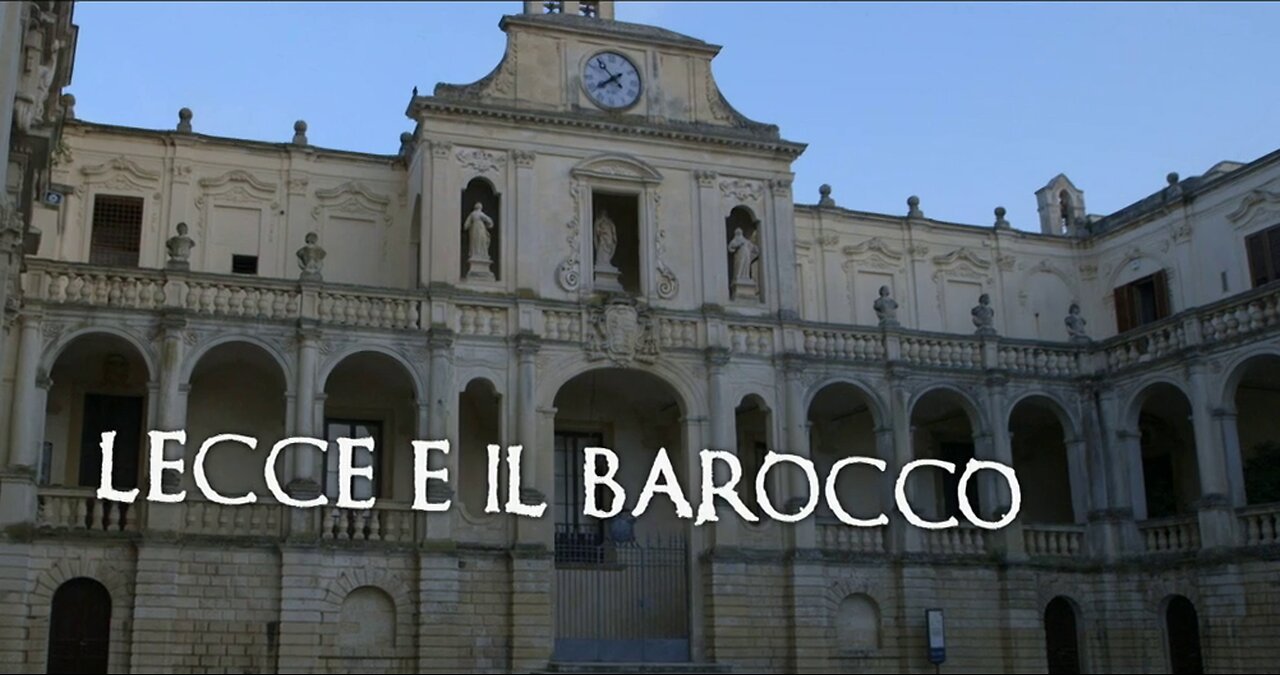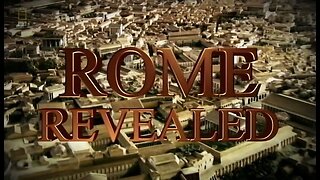Premium Only Content

Seven Wonders | Lecce and the Baroque (Episode 5)
Episode 5: In this episode we go to Lecce, a jewel in the heart of Salento, and at the end of the 16th century the center of diffusion of a particular interpretation of the Baroque.
The Lecce Baroque is an artistic and architectural form developed between the end of the 16th century and the first half of the 18th century, particularly in Lecce and the rest of Salento; it is recognizable for its bright decorations that characterize the cladding of the buildings. The style, influenced by Spanish Plateresque, spread in Salento from the mid-17th century thanks to the work of local architects such as Giuseppe Zimbalo (1617-1710) and Giuseppe Cino (1644-1722).
The flowering of Baroque art in Lecce began in 1571, when, with the battle of Lepanto, the threat of incursions by the Turks was definitively removed. This artistic movement exploded in its most significant characteristics only in the second half of the 17th century and lasted for a good part of the 18th century. It spread throughout the province, favored not only by the historical context, but also by the quality of the local stone used; Lecce stone, a soft and compact limestone with warm, golden tones suitable for working with the stonemason. The new style, at first, only affected sacred and noble buildings, but subsequently the baroque exuberance, floral motifs, figures, mythological animals, friezes and coats of arms also triumphed in private architecture, on the facades, balconies and on the portals of buildings. Various factors contributed to the birth and development of the Lecce Baroque: a period of peace and political stability, the presence of Counter-Reformation religious orders in the provincial city, a "Spanish" mentality and taste. The wealth of agricultural and floral decorative elements is a naturalistic and sunny metaphor of the "grace of God". Among the most recurring fruits are the pine cone, a symbol of fertility and abundance; the apple, symbol of temptation but also of redemption; the pomegranate, symbol of the Resurrection, of the Church (the seeds are the faithful), of fertility; the vine, attribute of Christ, Eucharistic symbol, blood of Christ in his passion.
Lecce together with Salento was enriched with Baroque buildings and palaces, thanks to the talent of local architects such as Giuseppe Zimbalo, Giuseppe Cino, Gabriele Riccardi, Francesco Antonio Zimbalo, Gustavo Zimbalo, Cesare Penna, Mauro Manieri and Emanuele Manieri (Lecce, 1714 – therein , 1780).
The most important Baroque works in Lecce are the Basilica of Santa Croce (1548-1646) and the nearby Government Palace, from the seventeenth century; the scenic Piazza del Duomo overlooked by the Cathedral (1659-1670) and the Seminary (1694-1709), in whose courtyard there is a well with rich sculptural ornamentation, the work of Giuseppe Cino and the churches of Santa Irene, Santa Chiara , San Matteo; the basilica of San Giovanni Battista al Rosario, a late work by Giuseppe Zimbalo but finished by Giulio Cesare Penna the Younger (1691-1718), with the impressive balustrade adorned with flower trophies; the eighteenth-century church of Carmine by Giuseppe Cino (1711-1733).
Episode 7: https://rumble.com/v498ii0-seven-wonders-siena-and-piazza-del-campo-episode-6.html
-
 45:02
45:02
Adaneth - History&Politics
15 days agoRome Revealed: Madness of Caligula (Episode 7)
98 -
 LIVE
LIVE
LFA TV
15 hours agoLFA TV ALL DAY STREAM - MONDAY 7/28/25
4,984 watching -
 1:14:21
1:14:21
Dear America
2 hours agoBongino Confirms The TRUTH!! Says He’ll “Never Be The Same” 👀 + JD 2028?!
100K170 -
 LIVE
LIVE
Caleb Hammer
1 hour agoScumbag Husband Destroys Marriage With Secret Debt | Financial Audit
71 watching -
 LIVE
LIVE
Badlands Media
9 hours agoBadlands Daily: July 28, 2025
5,890 watching -
 LIVE
LIVE
JuicyJohns
2 hours ago🟢#1 REBIRTH PLAYER 10.2+ KD🟢 !loadout
120 watching -
 LIVE
LIVE
Wendy Bell Radio
6 hours agoDemocrats Are As Fake As Russian Collusion
9,624 watching -
 48:34
48:34
Randi Hipper
1 hour agoBITCOIN TAKES OVER WALL STREET AS IT NEARS ALL TIME HIGHS
6.28K -
 57:51
57:51
MTNTOUGH Podcast w/ Dustin Diefenderfer
9 hours agoSam Mackey: From Juvenile Hall to a New Start in the Military | MTNPOD #126
6.48K -
 2:11:33
2:11:33
Matt Kohrs
13 hours agoMarket Open: New Highs, Breaking Trade News & Tech Earnings Report || Live Trading
21.5K2